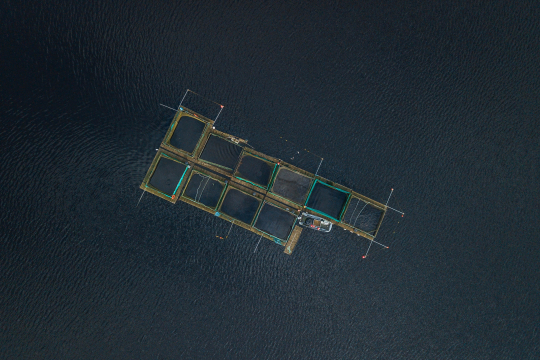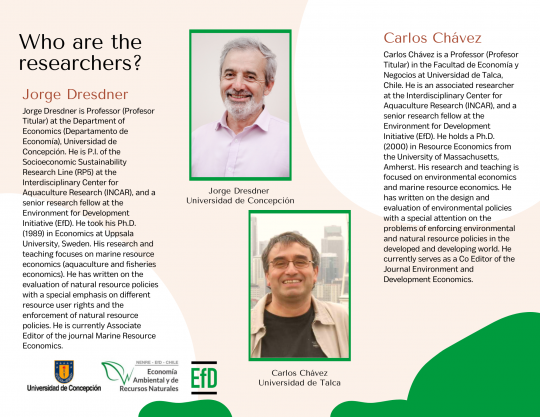Seafood products from the Global South should be evaluated according to the particularities of the areas where they are captured and should be considered part of an integrated system. Those are some of the recommendations in an article recently published in the Review of Environmental Economics and Policy.
The article called The "Seafood" System: Aquatic Foods, Food Security, and the Global South was presented at a symposium called "The Future of Seafood", and was written by EfD Chile researchers Dr. Carlos Chávez and Dr. Jorge Dresdner, in collaboration with scientists from Ghana (EfD fellows), Malaysia, New Zealand, Norway, and the United States.
Regional differences
The authors examined the seafood system, as well as potential tensions between environmental sustainability and food security in the Global South.
“We examine supply, demand, and trade issues related to the aquatic food system while considering regional differences between developing and transitional economies and the Global North,” explained Carlos Chávez.
He also indicated that the article highlights “the inconsistent application of market mechanisms to distribute resources among user groups, and how this problem is greater in the Global South.” Another example of the differences between the Global South and North is the increase of consumption of seafood in the former over the last few years.
Importance of seafood is underestimated
“The emphasis in aquatic product system management strategies on the effects of the production, sustainability, and governance in rich countries may lead to underestimating the importance of fish as food, its role in food security, and its contributions to livelihoods in the Global South, where many individuals lack food alternatives,” he said.
The global seafood system includes three sectors: commercial capture (wild caught) fisheries, recreational and subsistence fisheries, and aquaculture (farmed seafood).
Integrated food sectors
“Although this division is useful for many analyses, the truth is that the sectors are interconnected and overlapped. So one proposal based on the analysis of the three articles of this symposium is that policies should consider the interconnectedness of the system”, Jorge Dresdner explained.
To exemplify this interconnectedness, the authors comment that “in most capture fisheries, fishers deliberately target multiple species or take other species incidentally. They also participate in multiple fisheries that are regulated separately (often across regions), but the species themselves interact across ecosystems, for example with farmed salmon escapes. The regulation of the sectors is determined independently although they might target the same stock as it happens between the commercial and recreational sectors”. Moreover, consumers also consider goods produced in the different sectors as close substitutes.
The seafood system also competes with other uses of ocean space, including shipping, offshore wind power, and conservation of marine protected areas.
“When resources are allocated to a group of users, it is important to consider the effects on the others,” Jorge Dresdner said.
The article "The “Seafood” System: Aquatic Foods, Food Security, and the Global South” is authored by Andreea Cojocaru, Yaqin Liu, Martin Smith, Wisdom Akpalu, Carlos Chávez, Madan Dey, Jorge Dresdner, Viktoria Kahui, Ruth Pincinato, y Nhuong Tran. You can freely access to the article by clicking here.

